Why did prescription opioids cause so much suffering in postindustrial America’s small towns?
OxyContin, a potent painkiller, is said to have been pushed on rural Americans by profiteers at Purdue Pharma, which ultimately declared bankruptcy and settled criminal charges with the federal government for $8.3 billion. In this interpretation, the opioid epidemic is a cautionary tale of unchecked capitalism and toothless anti-government zealotry.
Sally Satel, a practicing psychiatrist in Washington, D.C., who works at a methadone clinic, has a more complicated story to tell. She relocated in 2018 to Ironton, Ohio, a depressed Appalachian town where she worked with patients and social service providers. Satel is unreserved in her criticism of the pharmaceutical industry, but she asserts that the opioid crisis is the result of a century-old practice of medicating pain as a means of treating the broken bodies of the region’s laborers.
She emphasizes that when Purdue’s sales force visited small Appalachian towns, it “pushed on an open door.” While there is no doubt that OxyContin was a particularly potent painkiller whose potential for abuse was criminally understated by its manufacturers, it was merely the latest in a long line of legal and illegal substances used to alleviate physical and mental suffering in the region. Even after OxyContin was reformulated to reduce abuse and opioid prescriptions decreased, overdoses and dysfunction remain prevalent.
In addition, Satel contests conventional theories of addiction that characterize it as a disease comparable to diabetes or Alzheimer’s. According to her, substance abuse stems from both innate tendencies and a person’s environment, which she refers to as “dark genies” and “dark horizons.” Satel emphasizes that the best way forward is to equip individuals with the means to make better use decisions while enhancing their opportunities to lead lives with indefinite trajectories.
Satel is a resident scholar at the American Enterprise Institute and the co-author, among other works, of the 2013 book Brainwashed: The Allure of Mindless Neuroscience. She spoke with Nick Gillespie of Reason via Zoom in late December.
What drew you to rural Ohio, and for how long did you reside there?
Satel: I spent a year there. I became the only psychiatrist in the southern Ohio county of Lawrence. I worked in a clinic and co-led a support group with a seasoned social worker. I observed patients and, as expected, discovered that addiction is addiction.
In the inner city, only heroin and, increasingly, fentanyl were available. When I arrived in Appalachia, heroin had already established itself, but pills were still prevalent. There has always been a pill problem in rural America, particularly in central Appalachia, where coal mining has played a significant role.
When discussing the opioid epidemic in Appalachia, many people start the clock in 1996, when OxyContin was introduced. OxyContin is a long-acting formulation of the opioid oxycodone. However, a great deal predates that. Percocet, Lortab, and Vicodin, which are all formulations of oxycodone and hydrocodone, were the most commonly trafficked prescription painkillers. They were extremely popular, and doctors prescribed them with little hesitation.
OxyContin is extremely potent due to its long duration of action. The pill is loaded with oxycodone. A typical Percocet contains 5 to 10 milligrams of oxycodone, whereas an OxyContin tablet can contain up to 80 milligrams. The duration of the immediate-release pills Vicodin and Percocet is between three and six hours. If you are experiencing acute pain, this is generally acceptable. The majority of people who were given a 30-day supply of antibiotics following a tooth extraction or other procedure never used it. OxyContin’s appeal was that it was long-acting, so that patients with moderate or severe chronic pain had a more stable blood level. You would not experience withdrawal-like symptoms between doses. This is a pharmacologically valid method.
By chopping it up and snorting it, or by mixing it with water and injecting it, you get a tremendous rush. It is pharmaceutical grade, so there are no impurities, making it safe. However, if you lack tolerance, it is obviously unsafe, and you can overdose on it.
Why were painkillers prescribed to patients?
Any blue-collar region will have a large number of manual labor jobs. Coal mining is just brutal. Obviously, this is no longer the dominant industry there, but coal mining was unbearably brutal and hazardous. In the 1920s and 1930s, numerous men resided in coal camps owned by mining companies. The company-employed coal camp physician was responsible for getting them into the mines. They medicated them in order for them to work. Even after coal mining ceased, this culture of prescribing for non-cancerous chronic pain was endemic to the region.
How is it right now?
There were economically vulnerable communities as a result of deindustrialization caused by globalization or automation. There were jobs in Ironton, but they were low-paying jobs. There was a significant out-migration of what would have been the middle and upper classes, leaving behind a community that has been hollowed out. The social service layer was very extensive. Hospitals are frequently the largest employer in these regions. There is an entire layer of people who are struggling, an entire cloud of despair. Because they had been selling there for so long, the pharmaceutical firms targeted Appalachia and northern Maine in the Northeast. The drug representatives pushed against an open door.
The majority of people who are prescribed these drugs use them without incident, and that’s the end of the story. They do not complete their prescriptions. The problem, however, is that they then place the extra medication in the medicine cabinet, where it ends up in the wrong hands.
The accidental addict is one of the most pernicious myths of the opioid epidemic. The notion that a patient visits a doctor and receives an opioid, though not necessarily OxyContin. Only 4% of all pain prescriptions were written for OxyContin, but it was always the drug of choice among pill abusers.
Less than one percent [of users with prescriptions who develop addiction] is a common finding, according to the vast majority of scientific studies. You find some that are approximately 8% pure. The sub-one percent rates were determined by meta-analyses that excluded studies that excluded patients with a history of addiction or a concurrent problem with depression or anxiety. Patients with a history of addiction, a history of alcoholism, or a concurrent problem with a psychiatric diagnosis or a severe existential issue are vulnerable. One can imagine being involved in an accident despite having a completely normal psychiatric history, but the accident is catastrophic. You’ve lost your job. You’ve lost function. It is a deeply depressing, demoralizing, and terrifying state, and these medications are not only effective for physical pain, but also for mental pain. These individuals are susceptible. Those are the individuals we must monitor.
You’ve discovered that the greater problem is with individuals who have never been prescribed these medications.
Much more frequently, they are abused by individuals who were never prescribed them. A graphic from a government agency reveals that only 22 percent of those who abused prescription painkillers obtained them from a physician. The average individual who abuses these drugs is aware of what they are doing. I co-led a group with John, a wonderful social worker who was a real-life Santa Claus and a seasoned professional. Patients would sometimes say, “If my doctor hadn’t prescribed OxyContin, I wouldn’t have gotten into trouble with it.” John would recline in his chair and remark, “I get it. You mean the doctor prescribed OxyContin, 40 milligrams, twice daily, to be crushed and snorted? Is he writing that?” The individuals in the room would chuckle. The majority of people who abused prescription medications had previously abused other drugs, and they also abused other drugs with their medication.
When examining toxicology screens of deceased overdose victims, it is uncommon to find a single drug. Together, alcohol, Valium-type drugs, benzodiazepines, cocaine, and other depressants are more dangerous than they are separately.
The reality of addiction is that individuals seek whatever they seek. These drugs are what I refer to as obliviants when you reach a point in your life where it becomes unbearable. In contrast to cocaine and alcohol, opioids are referred to as obliviants. They have the ability to numb you. They can alleviate all types of distress.
You discovered that there were strong, informal folkways regarding available drugs and how to use them.
Frequently, drug knowledge is transmitted from person to person. It is quite grassroots. Before OxyContin, Appalachians would crush Tylox, a combination of Tylenol and oxycodone. Previously, it was Vicodin. It was a combination of Valium and Xanax. They would be exchanged for commodities and services. However, OxyContin became a highly potent form of currency.
There have always been physicians who were extremely generous with prescriptions. By no means were all of them money-hungry, slothful Dr. Feelgoods. I spoke with approximately 16 physicians in their 60s and 70s, all of whom witnessed the progression of this issue. They were aware that some of their patients would be selling drugs in order to pay their rent or because their husband had recently lost his job. They disliked doing it, but they had compassion for these individuals. They also knew there was no pain program to which they could be sent.
How did Medicare and Medicaid contribute to the issue?
OxyContin is quite expensive. It is not generic, just as other long-term opioids were not. They are still under patent and quite expensive, but because Medicare paid for them, there was little incentive for physicians to consider [the cost to the patient]. The copayment was negligible. Then, when you can sell it for a dollar per milligram, you can make a tremendous amount of money.
Prescriptions for OxyContin and other prescription medications decreased as a result of their stigmatization. How did heroin and fentanyl fill the vacuum?
In 2010-2011, the number of prescriptions for pills peaked. OxyContin was reformulated so that it could no longer be crushed. The crackdown on pill mills was severe, and prescription monitoring programs became more stringent. Doctors were becoming increasingly aware of the fact that we overprescribed medications.
As pills became less accessible to pill abusers, heroin became available. 2010 marks the beginning of the increase of heroin use. It was constantly in the wings. People will use whatever is accessible and affordable, and heroin was both. Around 2014, the number of deaths attributable to fentanyl, which is approximately 100 times more potent than morphine, will skyrocket. If you have surgery and wake up with a drip in your arm that you can actually control with a button, fentanylit is likely to be excellent. In addition, fentanyl patches are highly effective. People would remove them [from the bandage] because it is long-lasting. If you are interested in abuse, you do not want a long-acting substance. You desire a short-acting substance. The fentanyl could be cut open and sucked out.
This demonstrates desperation. People would dive into dumpsters outside of nursing homes, and there was a widespread belief that if your loved one died of cancer, you shouldn’t mention it in the obituary because it would signal that you have a lot of pills at home.
What are the exact numbers associated with regular users?
About 2 million people are estimated to use, abuse, or misuse pills. It is so difficult to obtain a dose of heroin. According to government statistics, there may be fewer than 500,000 of them. I don’t believe there has been an increase in the number of people using opioids over the past few years; it’s more of an overdose phenomenon due to the potency of the current drug, fentanyl.
Is there actually more despondency in various regions of the nation than there was fifty or one hundred years ago? Or is the number of fatalities increasing because we have access to more potent drugs?
That is too complicated to answer. Suicides are on the rise. A death is a death, and coroners could still make mistakes identifying suicides, but it’s a little clearer than debating whether or not there’s an increase in depression because people are now more comfortable coming forward.
More individuals are taking their own lives. It is possible that self-medication is more dangerous, but it also appears that more people are attempting to flee.
Some of my patients were fourth-generation substance abusers whose grandfathers or great-grandfathers had lost their factory jobs in the 1960s. He consistently drank excessively and may have been a little rough with the wife. When he lost his temper, he began drinking more, and domestic violence became a serious issue. By the fourth generation, there has been too much dysfunction passed down for too long, and there are people who are uneducated and lack hope.
You have families in which no one works. This type of discipline lacks the internalization of having to be somewhere and being accountable. How to delay gratification, how to control impulses, how to develop trust, and how to have relationships—this type of growth is seriously derailed. There are individuals who suffer from a triple whammy: they live in environments where the boredom is crushing, their future prospects are bleak, and they lack these inner strengths. It is simple to comprehend why these substances are appealing.
You have stated that you are “hesitant to call addiction a disease,” particularly a “brain disease.” Nonetheless, addiction, or at least severe substance abuse, appears to be at or near the core of the opioid epidemic.
I prefer to refer to addiction as a symptom as opposed to a disease. I’m not going to argue with someone who views their problem as a disease, especially someone in recovery. Whatever serves their needs. Conceptually, however, I have significant issues with the disease model, particularly the formulation of brain disease.
Since 1995, the National Institutes of Health have been advocating for this. I can see why this is appealing because, according to the theory, the more you medicalize something, the more you remove it from the realm of criminal justice, the less you consider punitive responses and the more you consider therapy, funding for treatment, and funding for research. This is an anti-stigma strategy. I appreciate that, and I enjoy those conclusions. Simply put, I do not believe they are accomplished effectively by reducing one of the most complex behaviors to a brain tissue slice. I am not going to dispute any of the neurobiological facts or the extremely dramatic and eye-catching brain scans that they use; of course, the brain has changed in addiction. Thus, this is all true. The brain, however, is not altered to the extent that a person can no longer make decisions.
If my options are that addiction is a disease as opposed to a sin, a crime, or evidence of moral deficiency, then damn, I’ll choose disease. But it’s a condition, a behavioral phenomenon that responds to circumstances and consequences, and that people engage in for -reasons.
In Ironton and Washington, D.C., not a single patient who walked into a clinic did not say they were there because their spouse was going to leave them, their boss was going to fire them, their probation officer was going to punish them, or their child hated them. The significance is that they are reacting to something in their environment. If I had Alzheimer’s disease, a classic brain pathology, it would not matter what was going on in my environment, my cognition, or my perception of myself.
If you speak with someone who drinks excessively or uses drugs excessively—and I emphasize excessively because that is the problem—you should tell them, “Why are you acting in this manner? What’s happening?” That question makes sense. This question can be answered in terms of existence. If I asked an individual with Alzheimer’s disease, “Why do you have Alzheimer’s disease?” they might tell me about [brain] plaques, tangles, and neural pathology. The answer is not expressed using existential language. This is crucial because it relates to why people use and how we can help them stop.
The vast majority of pill abusers did not receive prescriptions for the drugs. Instead, the majority of participants were already addicted to alcohol or drugs. OxyContin, fentanyl, and heroin are all potent drugs, but their use exacerbates an already serious problem. How does this understanding impact treatment?
Another little-known fact is that the majority of people stop by themselves. Begin with one hundred individuals who have recently tried heroin or cocaine for the first time. Half of them will respond with “What’s the big deal?” A smaller proportion of the other half will exclaim, “Wow, this is great!” What about one person’s brain makes this drug more rewarding than it is for another?
Let’s concentrate on the group that found it extremely rewarding and pleasurable. They claim, “That was excellent. Give me more.” Some of them will go home, and their spouses will say, “I told you so.” “Where in hell have you been? What is the status of the funds? Why did you choose not to attend Timmy’s baseball game?” They will declare, “Oh, wait a second, wait a second! What am I up to?” They cease, and that is the conclusion.
There are fewer and fewer individuals who believe, “This is costing me, but I’m so miserable that this relief, which was initially free but now costs me a fortune, is still worthwhile.” You have a person with essentially two layers of suffering. First, they possess the genie that made drugs appealing to them in the first place, so this has always been a source of misery. Now they’ve accumulated a second layer: Perhaps they’ve contracted hepatitis, lost their job, or are about to be divorced; or perhaps they despise themselves because they’ve disappointed so many people, which makes the drugs even more appealing.
It is an extremely difficult cycle to break, but I have written about a woman I met in Ironton. She ran out of pills, desperately needed them, and went to her friend’s house in hopes that she would give her some. The friend was absent, but her disgusting boyfriend was present. “I’ll give you those pills,” he said. Already, the young woman was experiencing withdrawal symptoms. If we’re talking about brain scans, her brain was probably on fire at the time he said, “Here are the pills, but I’m going to expect something from you.” And that was a despicable act.
The woman received aid the next day. Some people don’t even get help. They simply cease the following day, and you cannot predict who will respond to what.
I’ve encountered clients who make me wonder, “My God, haven’t you hit rock bottom enough?” However, it is the next time that does it. The issue with fentanyl is that it is extremely dangerous to wait for the next dose. With Narcan [a drug that reverses opioid overdoses], you can at least keep people alive until they make a decision or are arrested as a result of harm reduction. I must say that forced [court-ordered] treatment can be effective. It’s not like pneumonia, where you can be in a coma and I can give you an IV of penicillin and you’ll wake up cured. The addicts must ultimately internalize the values of the treatment system. Motivation is necessary, but people can be motivated even in a coercive environment.
You are a physician and a psychiatrist. Do you believe that we have made progress in understanding and treating addiction over the past 30 or 40 years?
The more we medicalize this issue, the more we will be misled, and the more we will focus on medications.
Methadone, buprenorphine, naltrexone. I am completely in favor of these medications because they help people maintain their balance. If you have a craving, you will never take the first step toward quitting. I’m all for the medications, but I find it incredibly naive to believe that they could be sufficient. Ironically and to its credit, the National Institute on Drug Abuse funds a great deal of [treatment] research, but they don’t mention it. In lieu of this, they display brain scans and refer to addiction as “a disease like any other,” which it is not. When you visit a place like Ironton, it becomes clear that medicine and even public health are not sufficient. What do you do when you’ve finally gotten someone sober, but they’re in a depressing environment?
Here, there are numerous different crosscurrents. Perhaps because the pill problem primarily affects whites, it has been treated with more understanding and compassion and viewed in a broader context as a result of external factors. This is a positive development, but it extends beyond medicine. People abandon treatment at astronomical rates. At the end of the year, fewer than 60 percent will still be participating in a treatment program. I can tell you that very few individuals who visited our methadone clinic were able to tolerate their initial, second, or third doses of methadone. If your issue was merely withdrawal or physiological instability, we should have been able to treat you with a medication. Of course not, but we did help you stand still, and if you were motivated, we could be of great assistance.
Discuss further the dangers of medicalizing behaviors.
I have two musings: The first is that it can be problematic even within the confines of a clinic, let alone in society as a whole. In D.C., I worked at an urgent care clinic. It was associated with the criminal justice system, and I encountered individuals awaiting trial. The judge would state, “Well, we sent him to you because he cried” or “We sent him to you because he was once medicated in jail.” So many were unhappy; they had a lot of trouble making good decisions and controlling their impulses, but they were not mentally ill in the traditional sense, nor were they likely to respond to medication. They required assistance, but not in the field of psychiatry.
The second issue is that we do not medicalize certain issues sufficiently. People with schizophrenia have been underserved and neglected, which is a major blight on our society. Rikers Island, Los Angeles County Jail, and Cook County Jail are the country’s largest psychiatric facilities. We criminalize people with severe mental illness. On the one hand, we over-medicalize, and on the other, we pay insufficient attention to people with real brain diseases.
Do you believe that our society has become more psychologically sophisticated or perceptive over the past fifty years?
I think this is a very interesting development in terms of people who have the resources or the financial means to do creative things with psychedelics. This does not imply that they should conduct their own experiments, but research into this topic is crucial. However, there is also a great deal of harmful pop psychology, which encompasses the entire field of trauma. I do not wish to minimize the life-altering effects of child abuse and other tragic events, but people are seeking explanatory systems and exoneration. The trauma field, which consists of the most brilliant psychiatrists and psychologists I know and the most incompetent counselors, is frequently reduced to the following system: This happened to you, it’s terrible, and it’s ruined your life. You should forever stew in resentment over what was done to you, as you cannot do anything about it.
Have we become too dependent on pills?
I do not hold pharmaceutical companies responsible, God bless them. They produce wonderful, life-saving medications for numerous individuals. But frequently the message appears to be, “If only I had this pill, everything would be fine.” Occasionally, a pill can make a significant difference, but in most cases, so much additional effort is required that the fantasy of a magic bullet is unhelpful.
The interview has been edited for style and clarity. To hear the entire interview, subscribe to The Reason Interview With Nick Gillespie.
Conclusion
Psychiatrist Sally Satel on her eye-opening year at a clinic in Ironton, Ohio















